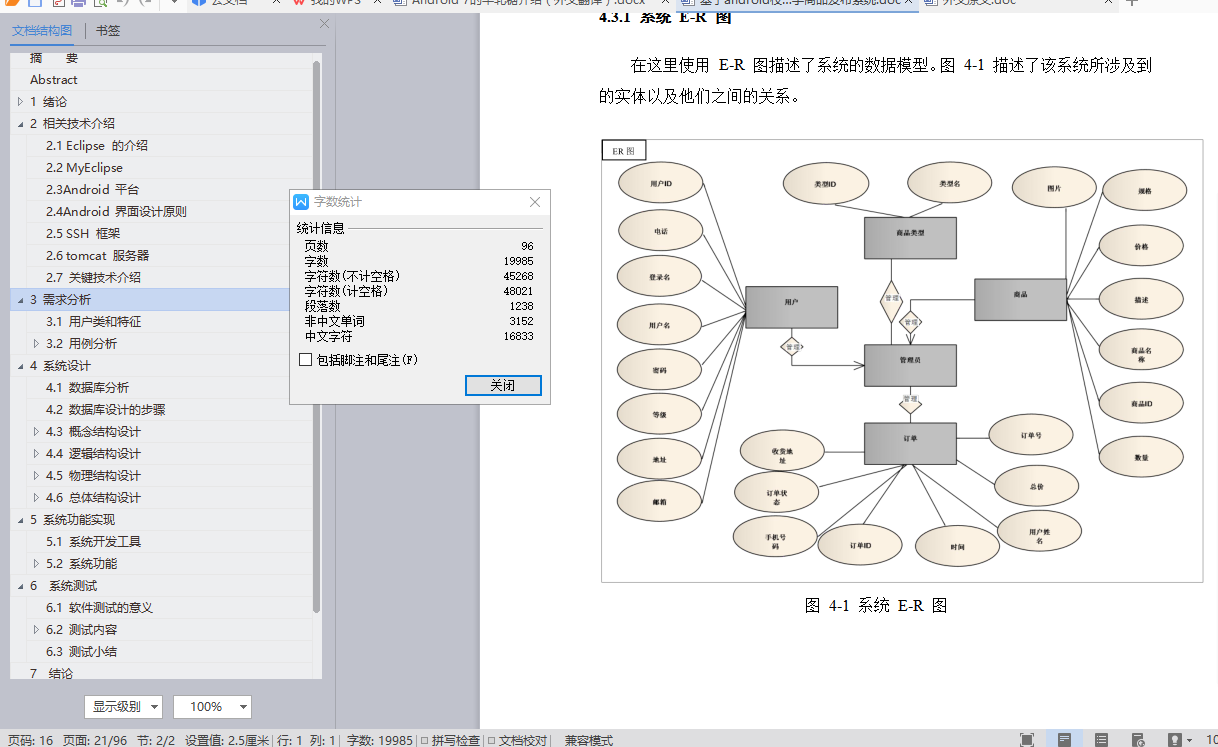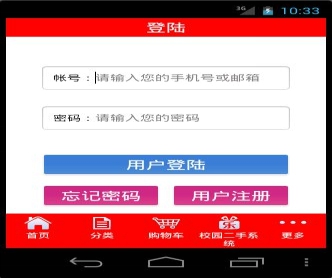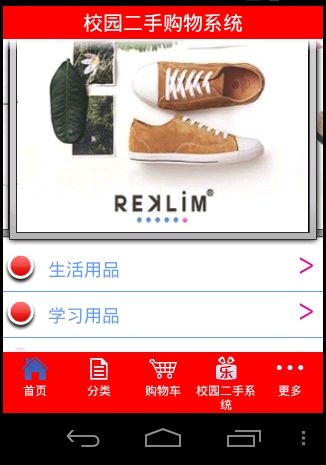基于android校园二手商品发布系统
摘 要
随着 Internet 的蓬勃发展,网络购物作为电子商务的一种形式正以其高效、低成本的优势,逐步成为新兴的经营模式和理念,人们已经不再满足信息的浏览和发布,而是渴望着能够充分享受网络所带来的更多便利。网络购物正适应了当今社会快节奏地生活,使顾客足不出户便可以方便快捷轻松地选购自己喜欢的商品。
这是一个基于 Android 的校园二手商品发布系统,为在校学生提供一个买卖商品的平台,满足学生物品交换的需求。它是在Windows 8下,以 Myeclipse 作为开发工具,Sql server为数据库开发平台,Tomcat网络信息服务作为应用服务器。SSH 框架设计后台管理,Android 客户端利用 java。它分为 Android客户端和 PC 客户端,Android 客户端由用户使用,主要包括用户注册、购物车管理、个人资料管理等功能,PC 客户端由管理员和用户共同使用,主要用于管理员对商品分类、用户以及订单的管理,而用户也可以在 PC 客户端进行商品的订购。
关键词:Android,SSH,校园购物
Abstract
With the rapid development of Internet, online shopping as a form of e-commerce is its efficient, low-cost advantage, and gradually become a new business model and philosophy, people are no longer satisfied to browse and publish information, but eager be able to fully enjoy the convenience brought by the network. Internet shopping is being adapted to the fast-paced life of today's society, so that customers can enjoy the convenience quickly and easily purchase their favorite products.
This is an Android-based publishing system used goods on campus for students to provide a platform for the sale of goods to meet the needs of students in the exchange of goods. It is under Windows 8 to Myeclipse as a development tool, Sql server database development platform, Tomcat web application server as an information service. SSH frame design management background, Android client use java. It is divided into Android client and the PC client, Android client is the user, including user registration, shopping cart management, personal information management features, PC client by administrators and users to share, mainly for administrators Categories, user and order management, and users can also be ordered merchandise in the PC client.
Keywords: Android, SSH, school shopping
目 录
摘 要 I
Abstract II
1 绪论 1
1.1 研究背景 1
1.2 国内外应用现状 2
1.3 研究的主要内容 2
1.4 可行性分析 3
2 相关技术介绍 4
2.1 Eclipse 的介绍 4
2.2 MyEclipse 6
2.3Android 平台 7
2.4Android 界面设计原则 8
2.5 SSH 框架 10
2.6 tomcat 服务器 11
2.7 关键技术介绍 11
3 需求分析 13
3.1 用户类和特征 13
3.2 用例分析 13
3.2.1 系统管理员用例分析 13
3.2.2 商品管理员用例分析 13
3.2.3 用户用例分析 14
4 系统设计 15
4.1 数据库分析 15
4.2 数据库设计的步骤 15
4.3 概念结构设计 16
4.3.1 系统 E-R 图 16
4.4 逻辑结构设计 17
4.4.1 数据逻辑图 17
4.4.2 用户逻辑结构设计 17
4.4.3 系统管理员逻辑结构设计 21
4.4.4 商品管理员逻辑结构设计 22
4.5 物理结构设计 23
4.5.1 系统表结构设计 23
4.6 总体结构设计 26
4.6.1 总体流程图 26
4.6.2 后台管理模块功能 27
4.6.3Android 端的模块功能 28
4.6.4 PC 端模块功能 29
4.6.5主要事务处理流程图和顺序图 31
4.6.6 文件夹结构组织 34
5 系统功能实现 39
5.1 系统开发工具 39
5.2 系统功能 39
5.2.1 Android 客户端界面 39
5.2.2 后台管理 43
5.2.3 PC 客户端界面 48
6 系统测试 53
6.1 软件测试的意义 53
6.2 测试内容 53
6.2.1 登录模块测试 53
6.2.2 注册模块测试 55
6.2.3 购物车模块测试 55
6.2.4 订单管理模块测试 57
6.2.5 商品搜索模块测试 59
6.2.6 顾客留言模块测试 60
6.3 测试小结 61
7 结论 62
参考文献 64
致 谢 65
附录 66






